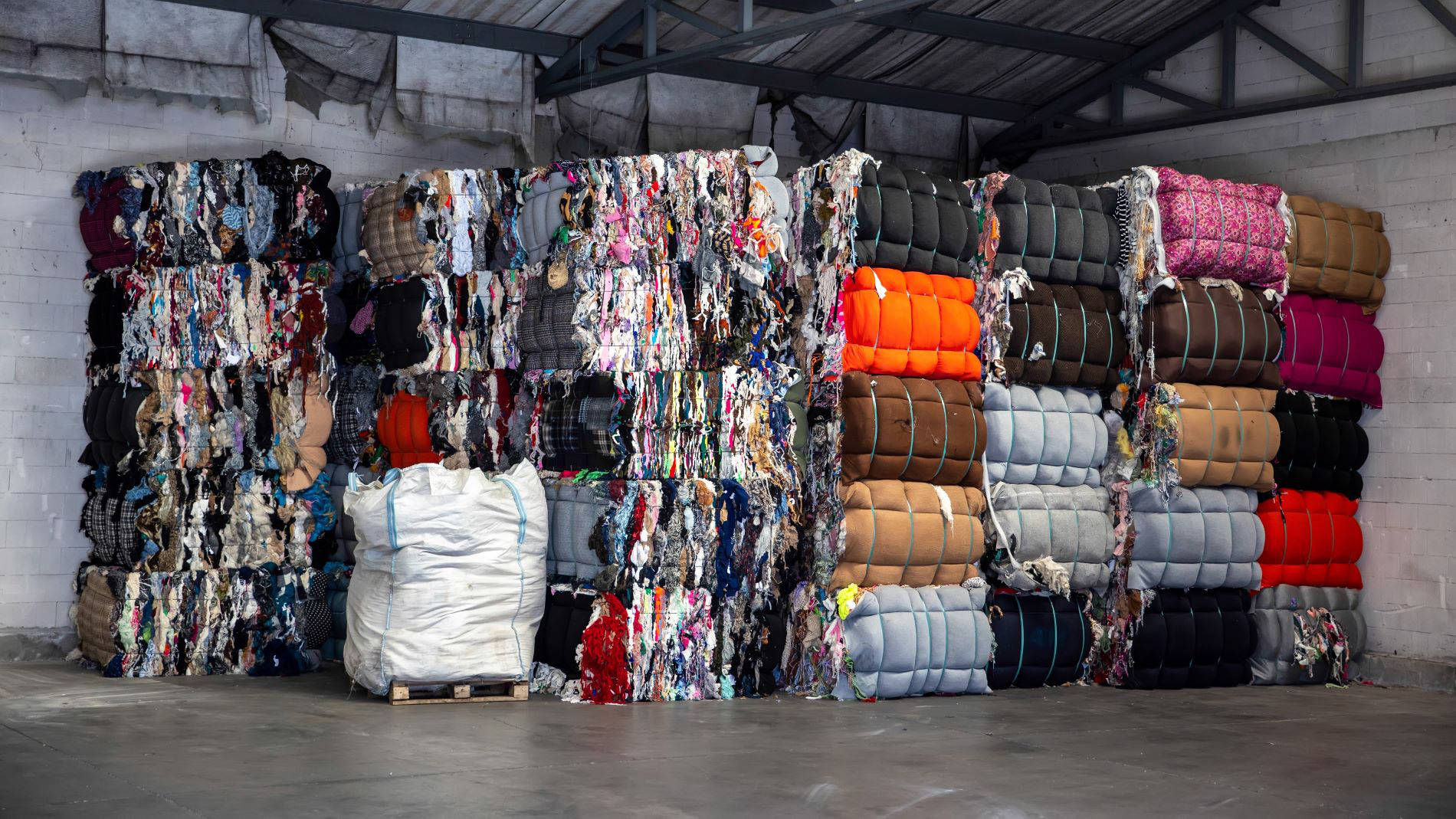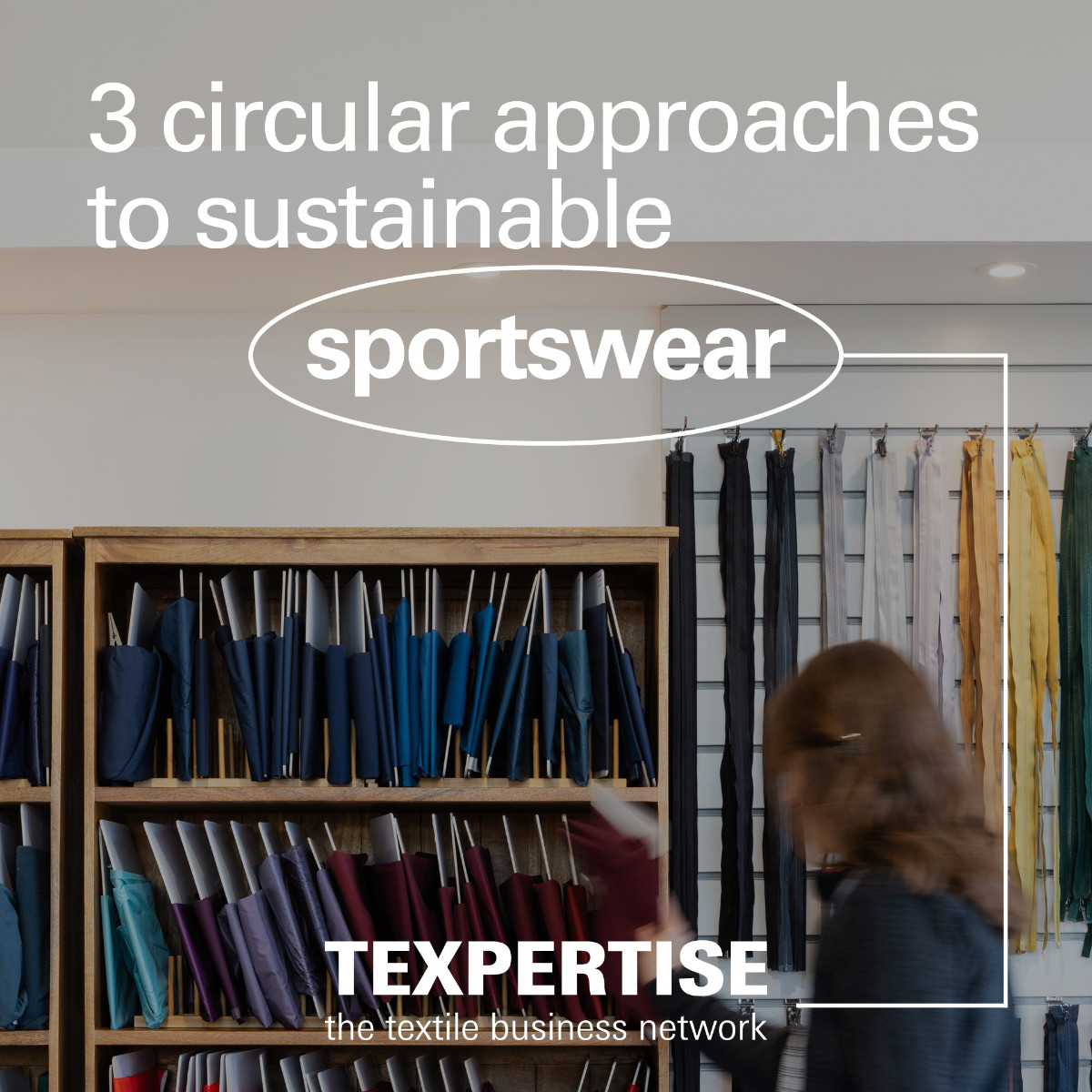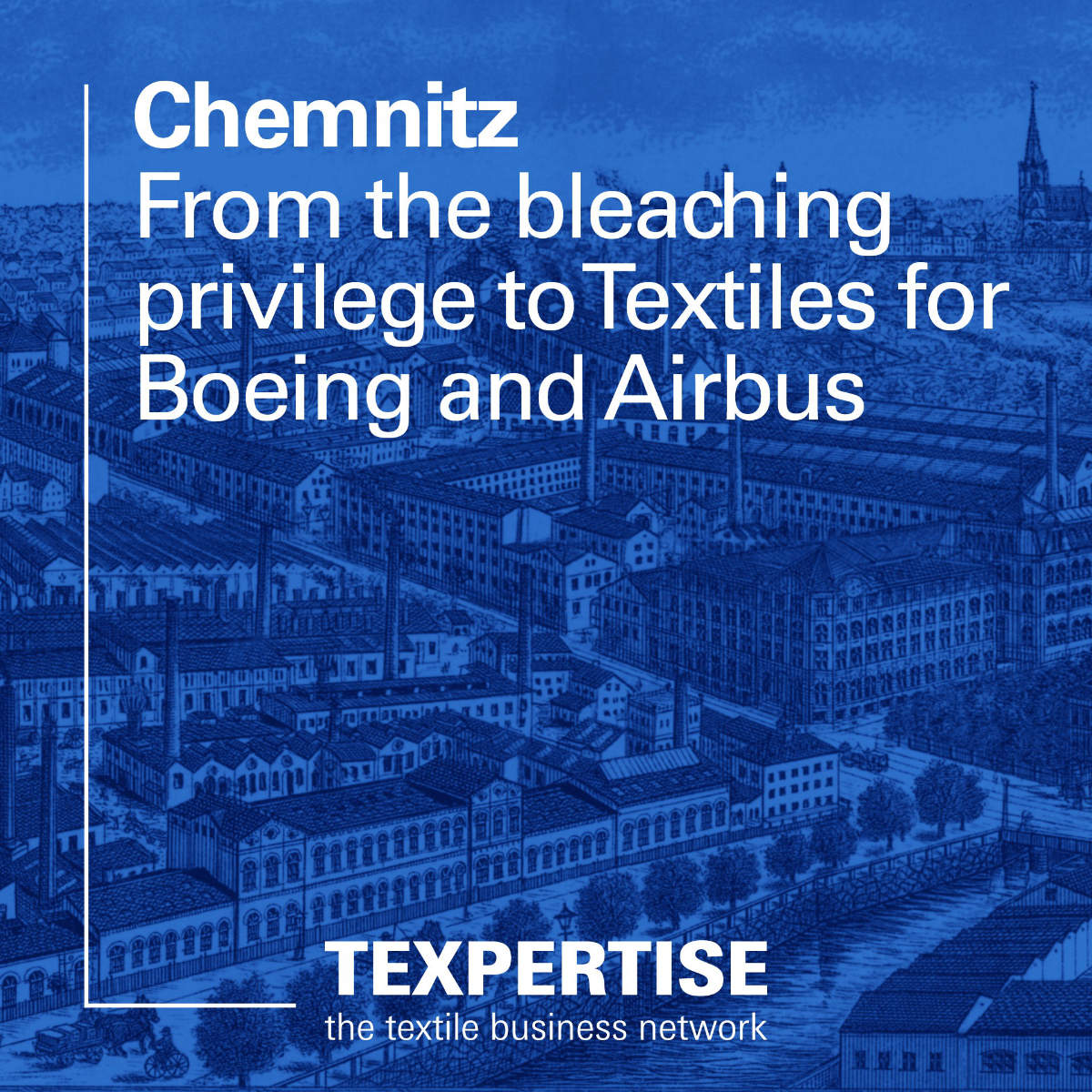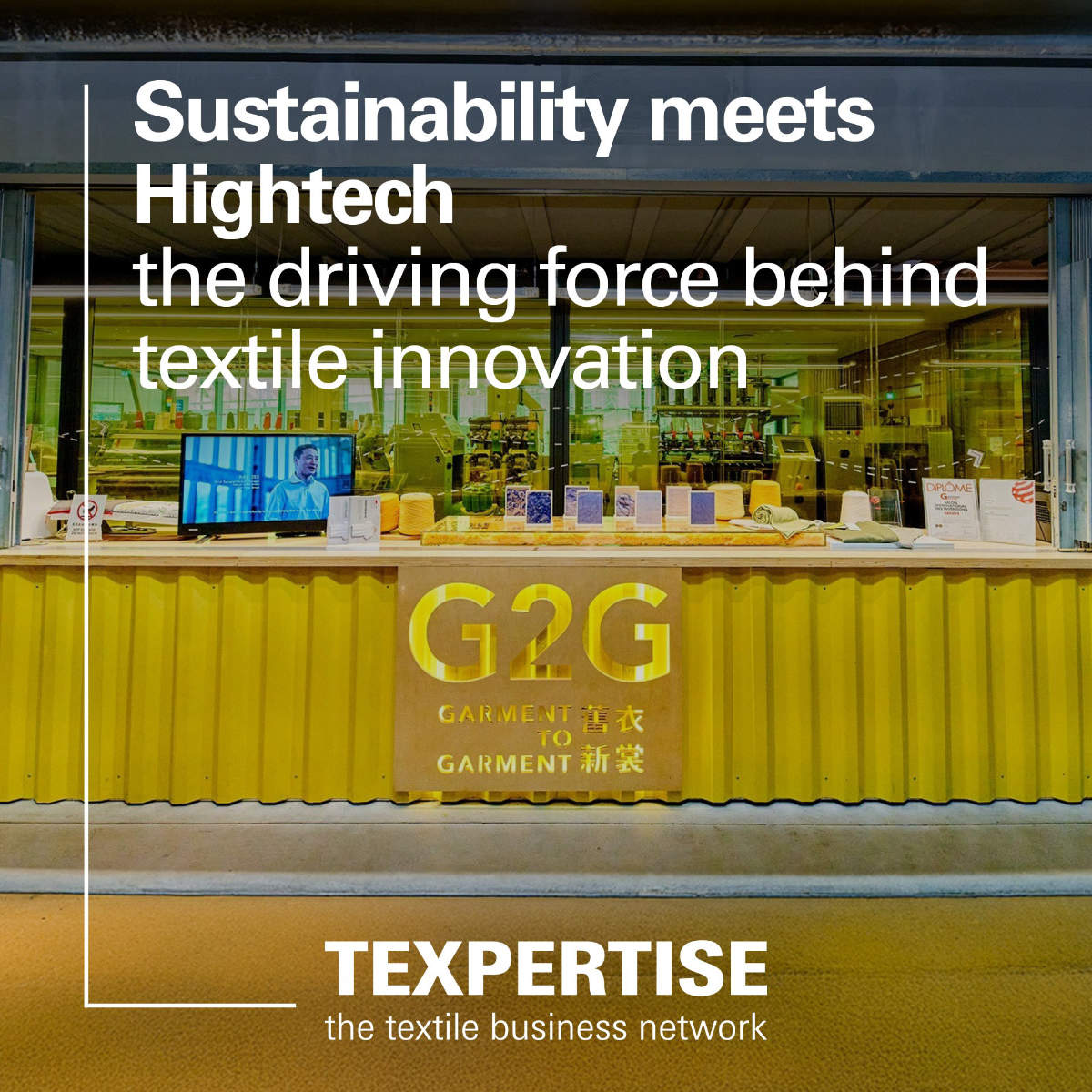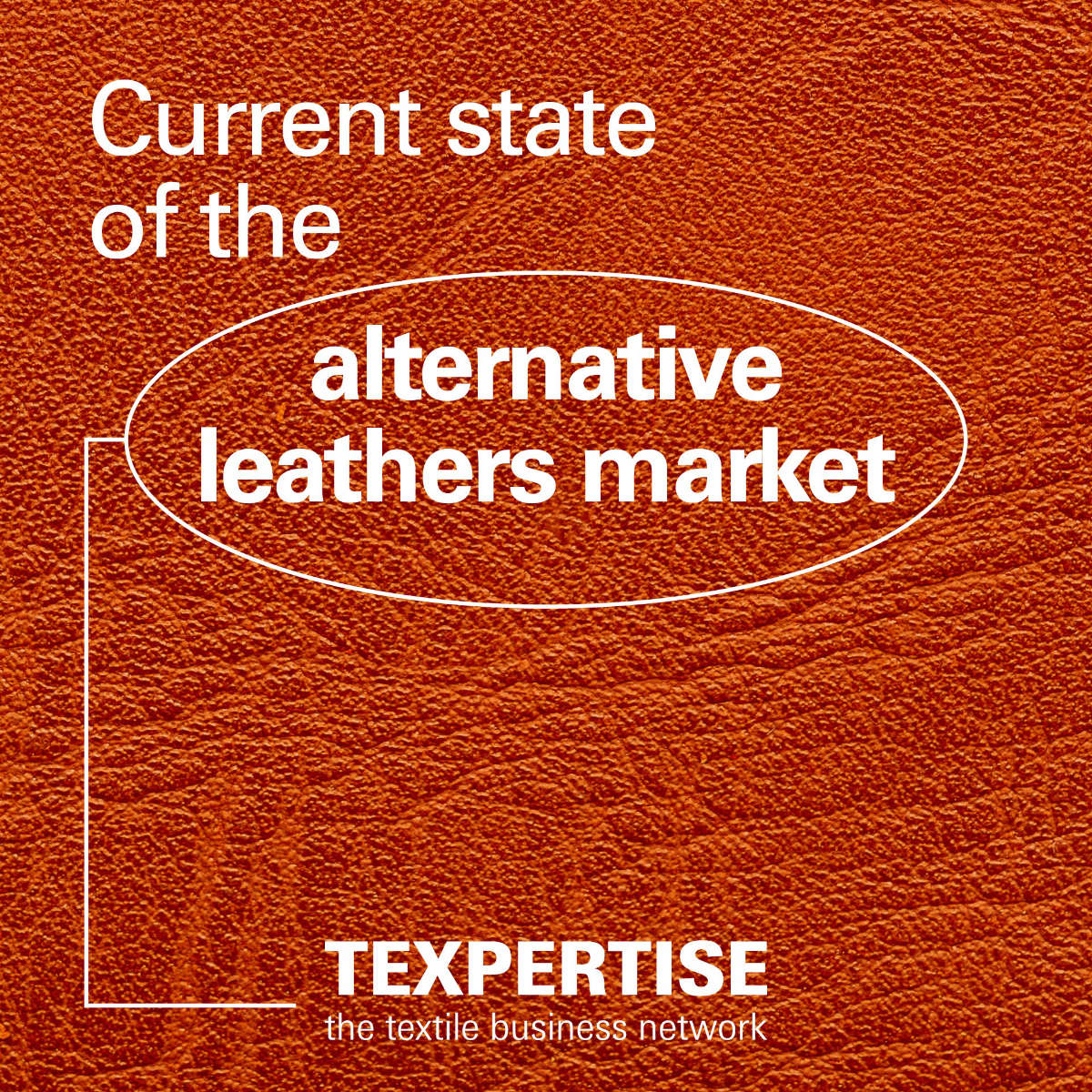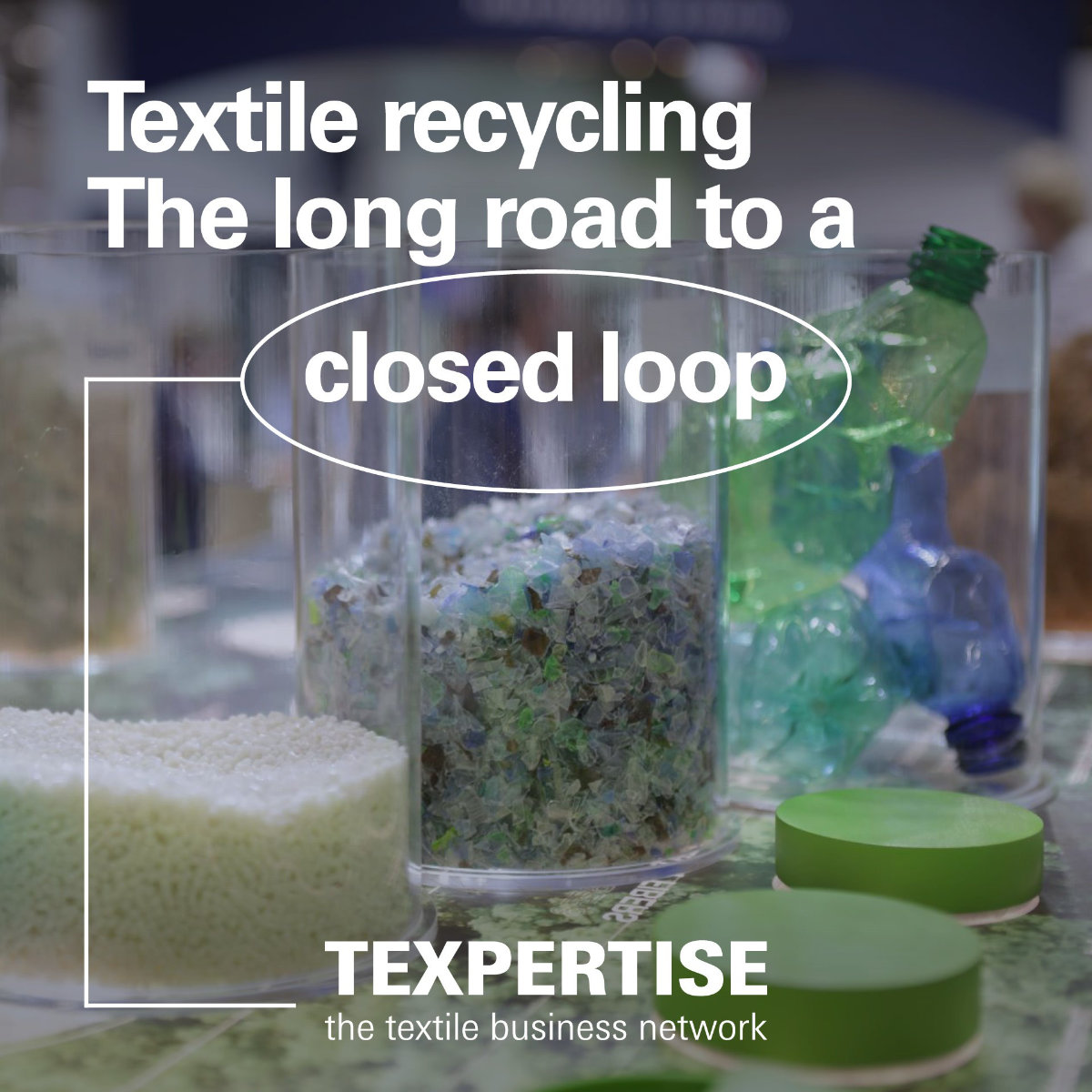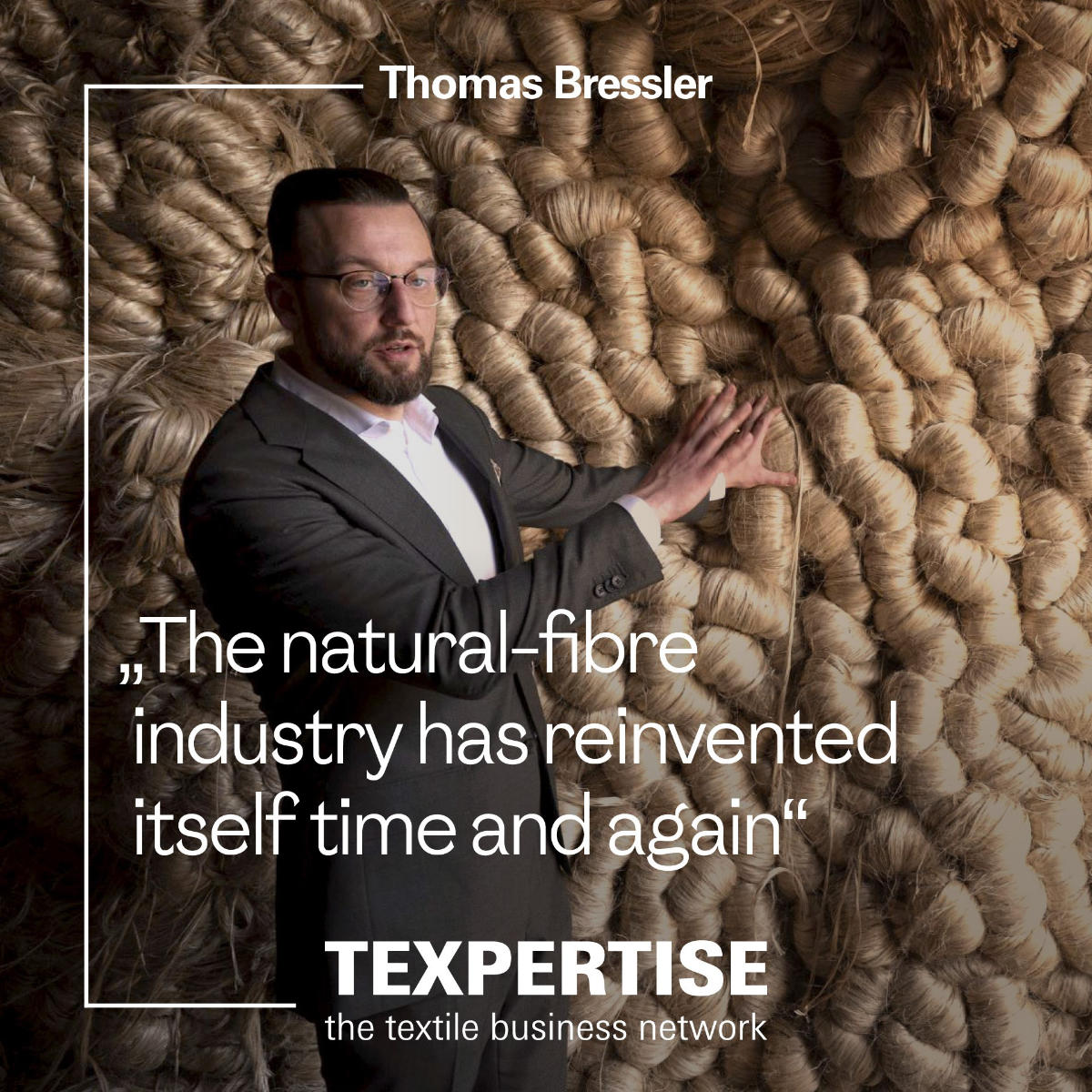Reading time: 4 minutes
The future of the textile industry is circular. As resources become scarcer and regulations stricter, more companies are adopting circular economy principles as a strategic response. But how can textiles truly be recycled? And which technologies, materials and processes are paving the way towards a circular future?
Why circular textiles matter for B2B
Circular textiles and closed-loop production transform the linear "take-make-waste" model into a regenerative cycle. Around 234 million tonnes of raw materials are processed for textiles each year in the EU – representing huge potential for resource savings, efficiency and climate protection. At the same time, in 2022 alone, around 6.94 million tonnes of textile waste were generated – equivalent to 16 kilograms per person. Only around 15% of this was separately collected; the rest ends up in incineration or landfill.
Globally, only 0.3% of produced textiles remain in the loop. The vast majority is either downcycled or not repurposed at all. Export is another issue: currently, around 1.4 million tonnes of used textiles are exported from the EU each year – many ending up in uncontrolled landfill sites in Africa or Asia, exacerbating ecological and social challenge.1
With the revised EU Waste Framework Directive mandating the separate collection of textiles from 2025, real pressure for action is emerging – but also an opportunity: for companies in the interior, processing and apparel sectors, new scope is opening up to build circular systems. The entire chain – from fibre to yarn, to finished product and back – is being reimagined. Circularity is becoming not only a regulatory requirement, but a strategic innovation opportunity across the industry.
Technology: fibre-to-fibre recycling, design for recycling & recyclate
Fibre-to-fibre recycling replaces virgin plastic with recycled fibres and significantly reduces CO₂ emissions, water and chemical usage. Design for recycling is key: simplified material composition and standardised product passports improve recyclability. For interior producers, this means defining recycling strategies already at the fabric design stage – for example, using mono-material laminates or visible seams.
The average share of recycled content in clothing currently stands at below 10%, though pioneering brands are already reaching 30–50%. Advances in chemical and mechanical fibre-to-fibre recycling are increasingly making it possible to produce high-quality yarns from recycled cotton, viscose or polyester. Examples include REPREVE® (recycled polyester from post-consumer textiles), R-TWO™ by ISKO (yarns with up to 50% recycled content), or ECONYL®, which recovers nylon from used textiles and fishing nets. These fibres offer quality comparable to virgin materials – with significantly lower environmental impact.
Machinery for textile recycling & automation
The industrial implementation of the textile circular economy depends on high-performance recycling machinery. Modern systems enable precise, automated sorting and processing of large volumes of textile waste – from both post-consumer and pre-consumer sources. Technologies such as NIR-based sorting, electrostatic separation and chemical dissolution processes can now efficiently handle complex blends and produce high-grade recyclates.
Of particular relevance for B2B processing: machine solutions are increasingly modular and can be seamlessly integrated into existing production lines. Automation not only reduces staffing requirements but also increases process reliability and traceability – two key requirements for circular production chains. The continued development of these technologies is therefore central to bringing textile recycling into widespread industrial use.
Outlook: circularity becomes the norm – but who will shape it?
The textile circular economy is on the verge of entering the mainstream. Regulatory frameworks, shifting consumer behaviour and technological innovation are driving its development. Companies that adopt circular economy strategies early on can secure ecological credibility.
Crucially, recycling must be integrated into the design process – through mono-material structures, separable components and digital product passports. On the production side, investment is needed in automated sorting, efficient recycling technologies and strong partnerships.
In the interior and processing sectors especially, demand is rising for certified recyclates with transparent origin and traceability. Monitoring and reporting are becoming strategic success factors. Circular textiles are evolving from a niche topic into a key strategy across the entire textile value chain.
As a B2B platform, the Texpertise Network supports this transformation and connects more than 500,000 industry players worldwide – from raw materials to recycling.
Conclusion: circular economy as a game-changer for the textile industry
The textile circular economy is far more than a trend – it offers real solutions to waste and climate damage. Through smart fibre-to-fibre recycling systems, automated sorting processes and closed-loop production models, enormous ecological and economic gains can be achieved. For B2B decision-makers in interior, processing and apparel, this means shaping technologies and business models that create value beyond the product life cycle. Those who integrate circular strategies now will gain a competitive edge – and take responsibility for a sustainable future.
FAQ – frequently asked questions
What does “design for recycling” mean in practice?
“Design for recycling” aims to ensure that textiles are designed from the outset to be efficiently recycled at the end of their life cycle. This includes mono-material fabrics, separable components, recycling-friendly dyes and clearly declared ingredients in digital product passports. It improves sortability, reduces recycling costs and forms the basis for functional closed-loop systems in the textile value chain.
How do fibre-to-fibre recycling processes work?
Fibre-to-fibre recycling breaks down used textiles into their base components and transforms them into new fibres. Mechanical processes physically shred fabrics into shorter fibres; chemical processes dissolve certain fibre types – such as cellulose or polyester – at the molecular level. Sorted input materials are essential to produce high-quality recycled yarns that can be used again in demanding interior or apparel applications.
What role do recycling machines play for B2B?
Recycling machines enable the precise, automated and large-scale processing of textile waste – a must for industrial-scale operations. Systems such as NIR sorters or chemical dissolution plants deliver high-grade recyclates that meet quality and traceability requirements. They are essential for companies offering circular textiles or transitioning existing production lines to closed-loop models.
